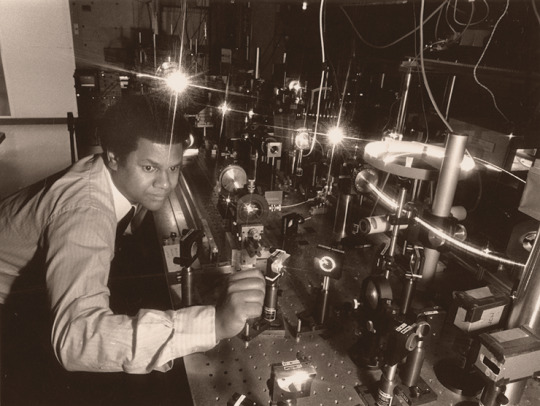#electronics department
Note
more sophie i command you


Sophie: Oh…um…

Sophie: …Hi…?
#the graveyard shift#the graveyard shift au#answering asks#sophie walten#the walten files#season 2#episode 6.5#loading in lore…#electronics department
140 notes
·
View notes
Photo

Speed Ratliff as the Boom Operator for SAW (2004)
#a serve tbh#Speed Ratliff#SAW#movies#horror#cinema#films#behind the scenes#bts#boom operator#sound department#gear#equipment#sound#tech#electronics#u
5K notes
·
View notes
Text
Computer control system & Robotics (66871)
অতি সংক্ষিপ্ত প্রশ্ন:
১।রিয়েল টাইম কন্ট্রোল সিস্টেম বলতে কি বুঝায়?
২।মোশোন কন্ট্রোল কি?
৩। লেডার ডায়াগ্রাম কি?
৪।ON line control system এর দুটি সুবিধা লেখ?
৫।Robotics কি?
৬। অ্যাডাপটিভ কন্ট্রোলার কাকে বলে?
৭।Fuzzy সেট বলতে কি বুঝায়?
৮।ফুজি লজিক কি?
৯।ল্যাডার Diagram কাকে বলে?
১০।Real time control কি?
১১।রোবট প্রোগ্রামিং Mode কত প্রকার ও কি কি?
১২।CAM কি?
১৩।রোবট ম্যানু পুলেটর কাকে…

View On WordPress
0 notes
Photo










Kmart (1975)
#kmart#vintage department stores#70s stores#70s fashion#70s aesthetic#vintage electronics#70s decor#vintage tvs#retail stores#1970s#seventies#1975
4K notes
·
View notes
Text

Lace experiment done on net that turned out too lopsided for the pattern I intended to use it for- don’t love the pattern itself (looked better when I was drawing it sjsjsj) but I do like the effect
EDIT: forgot to mention this is a visual pun- it’s a butterfly net :)
#id in alt#anyways with this we depart completely from the realm of passable technical skill bye bye nice knowing you#I like the lines reminds me of a couple of my older electronics screens which is FANTASTIC news for me :)#makes me happy and also opens up some potential future projects#anyways I gotta go do my exaaammmmmmmmsmsmnsjdbdhfhfh#lacemaking#fiber arts#embroidery#netting#netted lace#filet lace#my work#trypophobia
15 notes
·
View notes
Photo

Anthony M. Johnson conducting experiments on the optical properties of glass fibers, Quantum Physics and Electronics Research Department, AT&T Bell Laboratories, Holmdel, New Jersey, c. 1980s.
#science#physics#optics#Anthony M. Johnson#Quantum Physics and Electronics Research Department#AT&T Bell Laboratories#Bell Labs#Holmdel#New Jersey#USA#1980s
128 notes
·
View notes
Text
After Ohio rail disaster, Buttigieg is silent on restoring the safety standards Trump repealed

When a freight train carrying toxic chemicals derailed near East Palestine, Ohio, bursting into flame and sending up clouds of poisonous vinyl chloride smoke and gas, our immediate concerns were for the people in harm’s way and the train crew:
https://www.nytimes.com/2023/02/04/us/train-derailment-fire-palestine-ohio.html
If you’d like an essay-formatted version of this post to read or share, here’s a link to it on pluralistic.net, my surveillance-free, ad-free, tracker-free blog:
https://pluralistic.net/2023/02/11/dinah-wont-you-blow/#ecp
But those immediate concerns were soon joined by a broader set of worries: that the entire rail industry presented a systematic danger, and the Ohio derailment was a symptom of a much deeper pathology that endangered anyone who lives near one of the rail corridors that crisscross America.
The rail industry is the poster child for corporate power, and rail barons were among the first targets of Gilded Age trustbusters who saw the rail monopolies as a threat to the prosperity and wellbeing of Americans, as well as the integrity of the American political system itself.
40 years of neoliberal “consumer welfare” antitrust — starting with Reagan and continuing through every administration since — has seen the American rail sector achieve levels of concentration that meet and exceed the corrupt, untenable degree of the late 19th century.
Like the original rail barons, the current crop (including the self-styled cuddly billionaire Warren Buffett), have gutted rail investment, skirted on safety, maimed and abused their workforce, smashed their unions, and placed the entire US supply chain in a state of brittle precarity:
https://pluralistic.net/2022/02/04/up-your-nose/#rail-barons
Like all monopolists, the rail industry has been able to capture its regulators, trampling evidence-based policy and replacing it with rules that benefit shareholders at the expense of the public, labor, and customers.
https://doctorow.medium.com/regulatory-capture-59b2013e2526
This regulatory capture is an inevitable consequence of market concentration. When an industry is composed of dozens of small- and medium-sized firms, they are unable to converge on a single story about which rules regulators should favor them with: some of those companies will want things the others don’t, and each will vie to produce evidence disconfirming the others’ claims.
But when an industry dwindles to a handful of cozy giants whose C-suites are stuffed with company-hopping executives who’ve done time at every major company in the sector, they converge on a single fairy tale about the best way to regulate their industry, and convert their regulators’ truth-seeking exercises into rigged auctions that they handily win:
https://locusmag.com/2022/03/cory-doctorow-vertically-challenged/
That’s what happened during the Trump years, when rail lobbyists secured the repeal of a long-overdue, hard-won safety regulation that would have required rail companies to replace the Civil-War-era brakes on their rolling stock with modern electronically controlled pneumatic brakes (ECPs):
https://jacobin.com/2023/02/rail-companies-safety-rules-ohio-derailment-brake-sytems-regulations
The repeal cost millions in lobbying dollars, but it was worth it. Shortly after the ECP rule was scrapped, Norfolk Southern handed millions in bonuses to its execs and did billions in stock buybacks, while laying offf thousands of workers:
https://www.fool.com/investing/2018/10/25/norfolk-southern-implements-massive-buyback-progra.aspx
Elections, we’re told, have consequences. After Biden won the 2020 presidential election, he made a string of excellent appointments — people like FTC chair Lina Khan, who hit the ground running with detailed plans for making sweeping, consequential changes that would blunt corporate power, reverse-Trump era abuses, and correct the dysfunctions that created a political base for Trump:
https://www.eff.org/deeplinks/2021/08/party-its-1979-og-antitrust-back-baby
But other Biden appointees arrive in office with much less ambition. Transportation Secretary Pete Buttigieg has spent his tenure as King Log, failing to take action on spiraling airline cancellations, confining his major enforcement action to fining foreign airlines while ignoring the out-of-control abuses of America’s domestic carriers, except for the also-ran airline Frontier, which accounts for less than 2% of domestic travel:
https://pluralistic.net/2023/01/16/for-petes-sake/#unfair-and-deceptive
There are striking similarities between the structural defects in the airlines and the rail companies: both are highly concentrated sectors who have laid off senior staff, attacked unions, and blown billions in public money on stock buybacks and executive bonuses, even as their service degraded.
Both industries have been sharply criticized by experts and industry veterans, who’ve called for specific regulation. In the case of the airlines, SWA pilots and flight attendants had sounded the alarm about antiquated scheduling systems; for the rail companies, it’s experts like Grady Cothen, formerly a top safety expert at the Federal Railroad Administration (FRA), who told Congress that without action on braking systems, “[there] will be more derailments, more releases of hazardous materials, more communities impacted”:
https://www.congress.gov/event/117th-congress/house-event/LC69424/text?s=1&r=9
Despite these warnings, and despite the near-misses and smaller disasters that led up to the 100-foot-tall fireball over Ohio, Buttigieg’s DOT has not moved to reinstate the Obama-era brake safety rule, deferring to the monopoly rail owners self-serving claim that there is no need for such a move:
https://jacobin.com/2023/02/department-of-transportation-train-brake-regulation-ohio-derailment/
Indeed, the FRA is currently considering a rule that would further weaken braking rules, reducing obligations to inspect, test and certify braking systems:
https://www.regulations.gov/document/FRA-2019-0072-0005
The rail labor unions — the best source of independent expertise on the daily operation of the freight system — say that this would be a disaster: “Following through with a final rule would only deliver yet another financial windfall to rail carriers by eliminating inspections, testing and repairs, and deferring routine maintenance”:
https://www.goiam.org/news/territories/tcu-union/carmen-division-tcu/rail-labor-files-joint-comments-on-fras-nprm-2/
Serving as Transportation Secretary to the President of the United States of America makes you one of the most powerful people in the history of the human race. The Secretary’s powers, while not unlimited, are extensive. The American people need a DoT that works for them, not one that weakens safety rules:
https://pluralistic.net/2023/01/10/the-courage-to-govern/#whos-in-charge
Image:
Gage Skidmore (modified)
https://commons.wikimedia.org/wiki/File:Pete_Buttigieg_January_2020.jpg
CC BY-SA 2.0
https://creativecommons.org/licenses/by-sa/2.0/deed.en
James St John (modified)
https://www.flickr.com/photos/jsjgeology/27110172823/
CC BY 2.0
https://creativecommons.org/licenses/by/2.0/
This week (Feb 13–17), I’ll be in Australia, touring my book Chokepoint Capitalism with my co-author, Rebecca Giblin. We’re doing a remote event for NZ tomorrow (Feb 13). Next are Melbourne (Feb 14), Sydney (Feb 15) and Canberra (Feb 16/17). More tickets just released for Sydney!
[Image ID: A locomotive steaming away from a nuclear explosion. The face of the logo has been replaced with Transportation Secretary Pete Buttigieg's, in the style of Thomas the Tank Engine.]
#pluralistic#railroads#trains#freight#department of transport#pete buttigieg#monopolies#transport#dot#federal railroad administration#ohio#fra#ecp#electronically controlled pneumatic brakes
84 notes
·
View notes
Text
Whether you call it “tattleware,” “bossware,” or “surveillance capitalism,” Sen. Bob Casey (D-Pa.) has had enough of exploitative workplace monitoring technologies. Late last week, Casey and a handful of other Senate Democrats introduced the Stop Spying Bosses Act, which would help protect workers from intrusive employer surveillance both on and off the clock.
The legislation would require “timely and public” disclosures by companies about the data they’re collecting on employees, prohibit businesses from using surveillance practices that obstruct union organizing or monitor workers while they’re off the clock, and create a new division of the Department of Labor to regulate workplace surveillance. Sens. Cory Booker, John Fetterman, Elizabeth Warren, and Brian Schatz are cosponsoring the bill, which has also garnered support from some major labor groups.
Workplace surveillance has been a growing area of concern for Democrats in the past few years, as the shift to remote work during the pandemic has prompted increased use of employee monitoring technologies. Since the onset of the pandemic, the percentage of large companies that digitally monitor their workers has doubled, to more than 60%. At a time when managers can no longer keep an eye on workers in the office, they’ve increasingly relied on technologies such as keylogger software, geolocation tools that track workers’ physical movements, and even software that monitors worker attentiveness with webcams, using biometric data to scrutinize minute body movements and facial expressions.
Currently, federal law gives workers few protections from these kinds of surveillance practices. The Electronic Communications Privacy Act of 1986 does have some safeguards against workplace monitoring, but it has wide-ranging exceptions that allow employers to keep tabs on virtually all communications for “legitimate business purposes.” Currently, no federal law requires employers to disclose that they are monitoring workers, though individual states are increasingly taking steps to protect workers’ rights. In May 2022, for example, New York passed a law requiring private companies to publicly disclose whether employees will be electronically monitored, following similar legislation in Delaware and Connecticut. In California, a bill introduced last year would eliminate tools like facial recognition and emotion recognition technologies from the workplace.
The National Labor Relations Board is beginning to address the issue at the federal level, too. Last fall, the agency’s general counsel, Jennifer Abruzzo, issued a memo indicating that companies have overreached with their aggressive surveillance. She recommended that the NLRB impose a requirement that employers tell workers about the surveillance tools they use to monitor them, the justifications for those tools, and how they use the information they collect from workers.
In the memo, Abruzzo also acknowledged “abusive electronic monitoring” could interfere with employees’ right to organize a union or engage in other protected labor activities. As I’ve written before, unions around the country are currently in the middle of negotiating how data collected on workers can be used by employers. At companies like Amazon, unionization efforts are being driven partly by a culture of relentless workplace surveillance—and in some cases employers are responding to unionization efforts by doubling down on digital monitoring. Whole Foods, which is owned by Amazon, used heat maps to identify its stores at risk of unionization, according to Insider.
While the bill isn’t likely to pass in a divided Congress, it’s a sign that the proliferation of workplace surveillance during the pandemic is finally getting more national attention. “As the power imbalance in workplaces continues to grow, employers are increasingly using invasive surveillance technologies that allow them to track their workers like pieces of equipment,” Casey said in a statement introducing the legislation. “The Stop Spying Bosses Act is a first step to level the playing field for workers by holding their bosses accountable.”
#us politics#news#mother jones#2023#Sen. Bob Casey#Stop Spying Bosses Act#Department of Labor#workplace surveillance#sen. cory booker#sen. John Fetterman#sen. elizabeth warren#sen. Brian Schatz#keylogger software#geolocation#biometric data#Electronic Communications Privacy Act of 1986#National Labor Relations Board#Jennifer Abruzzo#Democrats
65 notes
·
View notes
Text
once again dreamt through the entire logistics of attending one of my sleep token shows. what is wrong with me
#the first dream about this was a 'practice' show before the real thing#but everyone in the crowd plus the band were there?? and i couldn't see at all#until one point vessel climbed up a wall like some spider creature thing#quite creepy actually#eventually i got a good spot but we weren't allowed to stay still and the band wasn't playing anything. then i woke up#and this time#i think this was merged with the rhrn plans because i was off to the show after arriving to stay with my parents#but somehow forgot it was on so left all my clothes at uni... couldn't wear the planned outfit and instead had a shirt from my#uni department#which says 'electronics and computer science'#embarrassing. anyway. woke up at 5pm? couldn't find the entrance?? and the venue was really strange#i was just stressed i wasn't wearing my fun outfit and i'd also left my makeup at uni so#no logo on my face as was the plan#and then on walking into the doors i realised omg i've never heard ascensionism#and was thinking maybe it's good to hear it live as my first listen#but maybe they'd think i was a fake fan if i couldn't sing along#and i was already wearing a shirt that said not sleep token but electronics and computer science...#woke up just as we all went in and for some reason everyone was holding hands#anyway#dreaming about it has made me somewhat less stressed about the real thing#because regardless of what happens i'll never forget my outfit and i will listen to ascensionism skhjdbcj
3 notes
·
View notes
Note
WILL YOU BE AT MEGACON 2023??????????
I MUST KNOW I WOULD LOVE TO SEE YOUR COSPLAYS! I JUST SAW THE COLLECTOR ONE AND OMG OMG OMG
IM SORRY IM JUST AHHHHHHHHH
YOUR SO AMAZING
❤️
shucks!!!!! thank you ;-; but alas I won't be, my work schedule makes it incredibly hard to attend cons/events + finances 🫣
this year i was tentatively looking at fanime, pax west, and maybe sacanime or a few renaissance faires in the PNW area but those are all v e r y sketchy 🥺
#the electrons wait for no man#actually some squeaklore#theres a non zero chance i might get kicked out of the department over an exam fiasco thing#i can get into it more but its messy#and as much as that would be sad im also like#'Oh no! Whatever will I do if I dont have this job in a program that has us working 80+ hours a week on top of hostility/harassment-#and a paycheck so small that a non-insignificant amount of their workers are living inside their cars/the building or cant afford to eat'#on top of having little no opportunity to do events or days off outside of academic holidays#maybe someday i can schedule things like cons again D:
10 notes
·
View notes
Text
how to explain to 60 year old white woman that constantly "putting it off until later" means that eventually you cannot put it off any longer and it gets significantly worse the longer you don't do it
#somethin somethin if you dont schedule maintenance your machine will do it for you#putting off my wheelchair until later has worsened my pain and mobility issues to where i am possibly going to need a motorized chair#putting off getting financial assistance has made it so that we've been barely scraping by on about 100$ a week for the past like two months#putting off fixing or replacing my necessary electronics means they're now all breaking at once and we cannot replace them#putting off getting me into therapy is inching me closer and closer to relapsing every day#like genuinely i managed to make myself afraid of hurting myself again (achievement considering. everything) and that is. quickly eroding#like I'm not at that point yet but i can see it coming on the horizon and it's been inching closer for a few months now#and i argue with my mom about all these things literally once a week and. nah we're still putting it off until later#everything is later she refuses to accept that this is Right Fucking Now#as in If We Do Not Get Help In At Least One Of These Departments I Might Actually Just Fucking Die
2 notes
·
View notes
Text

#flawlesshuxley#lbawdyhouse#lunarfolk#music#gypsyfader#soundcloud#spotify#electronic#underground#bandcamp#garage#indie#fortydollarrug#playstation 2#Tony hawk 4#twentydollarmat#department of eagles#grizzly bear#modern guilt#flylo#solo
4 notes
·
View notes
Text
2 notes
·
View notes
Text
I lied I just remembered I DID make a ruina/bb/bcs cinematic universe crossover drawing


#ramble#literally unfinished forever bc i cant figure out howards face but it all stems from me connecting the dots btwn roland and jimmy#theyre quite similar. hey are you reading this and interested yet (shoving my pet repressed 33 year old highly skilled guy at you)#also in this AU chuck needs to be underground encased in metal because every single thing is electronic in this world#and yes ruina does have lawyer characters theres an entire notary department that kills people with robot fists#and a notary skeleton.#god damn i love talking in tags Los Pollos just makes enkephalin instead of meth. its really quite similar to whats going on in lobcorp
3 notes
·
View notes
Text
Notable activities of the Electronics and Communication Engineering department
#Notable activities of the Electronics and Communication Engineering department#ece department in krct#results#admission#opportunities of ece department#best engineering course ece#ai college#councilling
0 notes
Text
Turning up the heat on next-generation semiconductors
New Post has been published on https://thedigitalinsider.com/turning-up-the-heat-on-next-generation-semiconductors/
Turning up the heat on next-generation semiconductors


The scorching surface of Venus, where temperatures can climb to 480 degrees Celsius (hot enough to melt lead), is an inhospitable place for humans and machines alike. One reason scientists have not yet been able to send a rover to the planet’s surface is because silicon-based electronics can’t operate in such extreme temperatures for an extended period of time.
For high-temperature applications like Venus exploration, researchers have recently turned to gallium nitride, a unique material that can withstand temperatures of 500 degrees or more.
The material is already used in some terrestrial electronics, like phone chargers and cell phone towers, but scientists don’t have a good grasp of how gallium nitride devices would behave at temperatures beyond 300 degrees, which is the operational limit of conventional silicon electronics.
In a new paper published in Applied Physics Letters, which is part of a multiyear research effort, a team of scientists from MIT and elsewhere sought to answer key questions about the material’s properties and performance at extremely high temperatures.
They studied the impact of temperature on the ohmic contacts in a gallium nitride device. Ohmic contacts are key components that connect a semiconductor device with the outside world.
The researchers found that extreme temperatures didn’t cause significant degradation to the gallium nitride material or contacts. They were surprised to see that the contacts remained structurally intact even when held at 500 degrees Celsius for 48 hours.
Understanding how contacts perform at extreme temperatures is an important step toward the group’s next goal of developing high-performance transistors that could operate on the surface of Venus. Such transistors could also be used on Earth in electronics for applications like extracting geothermal energy or monitoring the inside of jet engines.
“Transistors are the heart of most modern electronics, but we didn’t want to jump straight to making a gallium nitride transistor because so much could go wrong. We first wanted to make sure the material and contacts could survive, and figure out how much they change as you increase the temperature. We’ll design our transistor from these basic material building blocks,” says John Niroula, an electrical engineering and computer science (EECS) graduate student and lead author of the paper.
His co-authors include Qingyun Xie PhD ’24; Mengyang Yuan PhD ’22; EECS graduate students Patrick K. Darmawi-Iskandar and Pradyot Yadav; Gillian K. Micale, a graduate student in the Department of Materials Science and Engineering; senior author Tomás Palacios, the Clarence J. LeBel Professor of EECS, director of the Microsystems Technology Laboratories, and a member of the Research Laboratory of Electronics; as well as collaborators Nitul S. Rajput of the Technology Innovation Institute of the United Arab Emirates; Siddharth Rajan of Ohio State University; Yuji Zhao of Rice University; and Nadim Chowdhury of Bangladesh University of Engineering and Technology.
Turning up the heat
While gallium nitride has recently attracted much attention, the material is still decades behind silicon when it comes to scientists’ understanding of how its properties change under different conditions. One such property is resistance, the flow of electrical current through a material.
A device’s overall resistance is inversely proportional to its size. But devices like semiconductors have contacts that connect them to other electronics. Contact resistance, which is caused by these electrical connections, remains fixed no matter the size of the device. Too much contact resistance can lead to higher power dissipation and slower operating frequencies for electronic circuits.
“Especially when you go to smaller dimensions, a device’s performance often ends up being limited by contact resistance. People have a relatively good understanding of contact resistance at room temperature, but no one has really studied what happens when you go all the way up to 500 degrees,” Niroula says.
For their study, the researchers used facilities at MIT.nano to build gallium nitride devices known as transfer length method structures, which are composed of a series of resistors. These devices enable them to measure the resistance of both the material and the contacts.
They added ohmic contacts to these devices using the two most common methods. The first involves depositing metal onto gallium nitride and heating it to 825 degrees Celsius for about 30 seconds, a process called annealing.
The second method involves removing chunks of gallium nitride and using a high-temperature technology to regrow highly doped gallium nitride in its place, a process led by Rajan and his team at Ohio State. The highly doped material contains extra electrons that can contribute to current conduction.
“The regrowth method typically leads to lower contact resistance at room temperature, but we wanted to see if these methods still work well at high temperatures,” Niroula says.
A comprehensive approach
They tested devices in two ways. Their collaborators at Rice University, led by Zhao, conducted short-term tests by placing devices on a hot chuck that reached 500 degrees Celsius and taking immediate resistance measurements.
At MIT, they conducted longer-term experiments by placing devices into a specialized furnace the group previously developed. They left devices inside for up to 72 hours to measure how resistance changes as a function of temperature and time.
Microscopy experts at MIT.nano (Aubrey N. Penn) and the Technology Innovation Institute (Nitul S. Rajput) used state-of-the-art transmission electron microscopes to see how such high temperatures affect gallium nitride and the ohmic contacts at the atomic level.
“We went in thinking the contacts or the gallium nitride material itself would degrade significantly, but we found the opposite. Contacts made with both methods seemed to be remarkably stable,” says Niroula.
While it is difficult to measure resistance at such high temperatures, their results indicate that contact resistance seems to remain constant even at temperatures of 500 degrees, for around 48 hours. And just like at room temperature, the regrowth process led to better performance.
The material did start to degrade after being in the furnace for 48 hours, but the researchers are already working to boost long-term performance. One strategy involves adding protective insulators to keep the material from being directly exposed to the high-temperature environment.
Moving forward, the researchers plan to use what they learned in these experiments to develop high-temperature gallium nitride transistors.
“In our group, we focus on innovative, device-level research to advance the frontiers of microelectronics, while adopting a systematic approach across the hierarchy, from the material level to the circuit level. Here, we have gone all the way down to the material level to understand things in depth. In other words, we have translated device-level advancements to circuit-level impact for high-temperature electronics, through design, modeling and complex fabrication. We are also immensely fortunate to have forged close partnerships with our longtime collaborators in this journey,” Xie says.
This work was funded, in part, by the U.S. Air Force Office of Scientific Research, Lockheed Martin Corporation, the Semiconductor Research Corporation through the U.S. Defense Advanced Research Projects Agency, the U.S. Department of Energy, Intel Corporation, and the Bangladesh University of Engineering and Technology.
Fabrication and microscopy were conducted at MIT.nano, the Semiconductor Epitaxy and Analysis Laboratory at Ohio State University, the Center for Advanced Materials Characterization at the University of Oregon, and the Technology Innovation Institute of the United Arab Emirates.
#advanced materials#air#air force#Analysis#applications#approach#Art#atomic#attention#Building#cell#cell phone#change#comprehensive#computer#Computer Science#contacts#defense#Defense Advanced Research Projects Agency (DARPA)#Department of Energy (DoE)#Design#devices#dimensions#earth#Electrical Engineering&Computer Science (eecs)#electron#electronic#Electronics#electrons#energy
0 notes